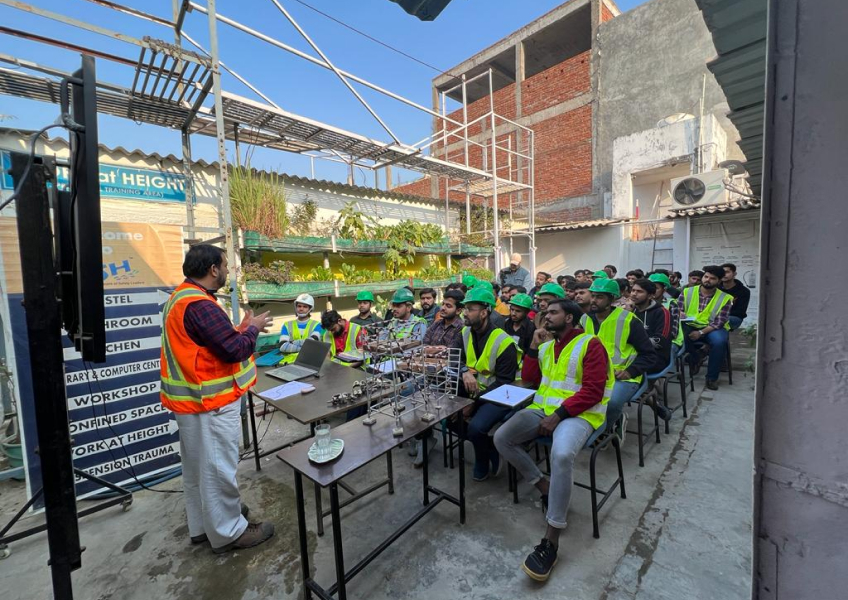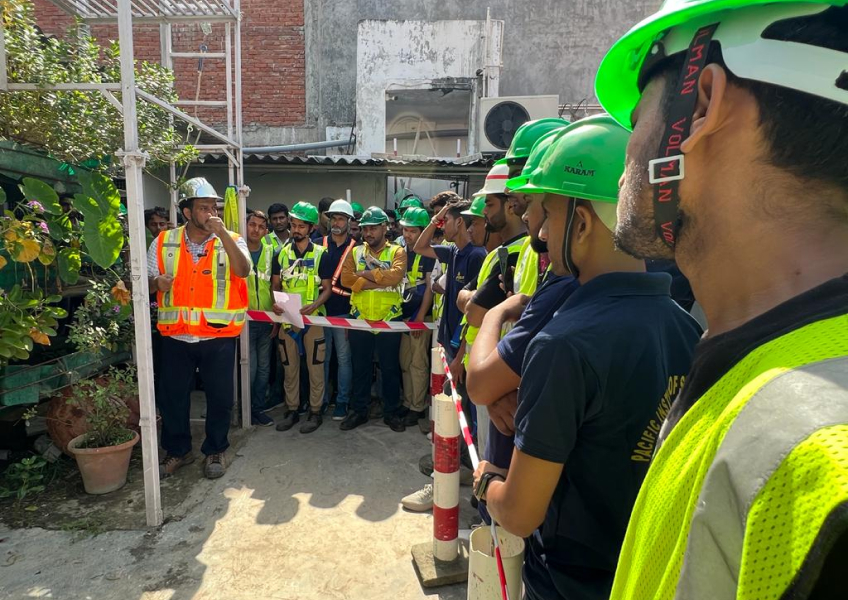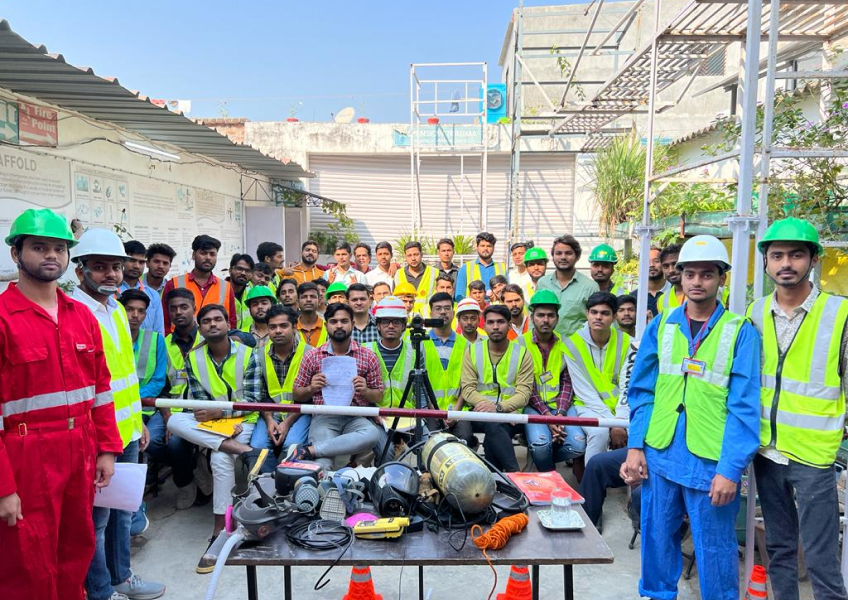Get in touch

health and safety management
Over the last few decades, the influence of technology on our daily lives has been astounding. Do you recall when music was recorded on portable CDs and getting about required the use of paper maps and (gasp!) asking for directions? Many new models have been developed to make our lives better, and these same developments are being applied to the workplace too though. That is why we have published this article - to highlight some of the most important technological changes affecting workplace health and safety management.
It's an exciting moment to work in the health and safety sector, with numerous emerging technologies already having a big influence on how we do things. And, given the rapid pace at which new concepts are being introduced to the market, there will be many more alternatives available in the not-too-distant future. It's an exciting moment!
We've created a list of 5 leading technologies that have already been developed and will have a big influence on employee health and safety management when they are polished and improved.
Digital Interfaces
Since 1980, computers have revolutionized the way we operate, yet the range of hardware and software options has grown exponentially over the years. A few instances of how safety officials now have access to the information earlier only conceivable include the utilization of photographs and videos and the collection of digital signatures, timestamps, and geolocation tags from portable devices.
The benefits of digitalization are numerous. Paper forms are now being overtaken with digital forms filled out on-site with mobile devices, combined with secure cloud storage of data and fast reporting features, which eliminates the need for outdated paper forms and their sluggish and expensive reporting. In addition, this digital platform will make it easy to incorporate all the exciting new technologies that will be launched in the coming years.
Wearable Technology
Safety technology isn't just for computers and mobile devices; it can also be worn by your staff to increase productivity while keeping them safe. This industry is fast growing and is expected to expand further in the future years. Here are three examples that have previously been produced and are commercially available:
Exoskeletons
Any sci-fi enthusiast who enjoys movies like Iron Man, The Expanse, or just about any space movie has probably seen something similar. To enhance your strength or avoid damage from repetitive jobs, such as lifting heavy objects, you can wear an exoskeleton.
Despite the reality that this technology is still in its initial stages, we may expect to see a lot more of it as science advances. Exoskeletons are now highly expensive and have certain limits in terms of usability, but if the entertainment industry is any indication, we may anticipate huge things from them shortly.
Location tracking devices
Employees may now wear devices that track their whereabouts and enable them to immediately request assistance. These are incredibly significant for workers who work individually, but they are also useful in an emergency if workers do not make it to the muster place. People in need of help can be identified using location monitoring devices, reducing the number of emergency workers needed to find them. This technology can be provided in the form of a physical device, an app for existing phone devices, or a hybrid of the two.
Vital Sign Monitors
Vital signs can be monitored in dangerous environments using wearable sensors. An early warning system that includes heart rate, blood pressure, and blood oxygen saturation levels allow for early intervention or early medical reaction before the problem becomes more serious. Wearables come in a variety of shapes and sizes, and new technology is continuously being released. In the wearable industry, a newcomer blends textiles with tracking technology — t-shirts that monitor your vital signs. Men's and women's shirts equipped with cardiac and respiratory sensors are generally available on the market.
Drones
Drones get a lot of attention and are frequently acquired for amusement purposes. The aerial perspectives they present give spectacular unique perspectives that we aren't used to experiencing. And this shift in viewpoint has resulted in a significant increase in their worth to the health and safety management sector for two key reasons:
· Drones can capture images and videos out of any height or aspect.
· Drones may inspect regions that are dangerous to reach on foot or by vehicle.
Artificial Intelligence (AI)
When we talk about artificial intelligence, we usually think of human-like robots & supercomputers such as HAL 9000 from 2001: A Space Odyssey or Agent Smith from The Matrix — Hollywood is fond of telling us of the threats of AI. The everyday uses of AI, on the other hand, are completely different from what we see on the big screen and are already giving significant value daily.
AI may be found everywhere. Every time you check Google Maps, use face detection to unlock your device, engage with a chatbot on a website, or conduct a Google search, you are interacting with AI.
Virtual Reality
Virtual reality may immediately think of video games, and it's also become a tremendous tool for business. Its usefulness derives from replicating situations, which has shown to be highly beneficial for health and safety training in the past couple of years. The use of a VR simulator before utilizing a new type of truck is a good example.
Companies have been using virtual reality to walk inside an oil pipeline to examine it for leaks or degradation. Think the savings in averted calamities! For decades, pilots in training have used simulators to learn how to fly without really stepping foot inside an airplane. Virtual reality now makes this level of instruction available to essentially everyone.
Conclusion
Technology may provide an exciting glimpse into how our lives could be better while also generating concern about how to stay up with and incorporate these improvements into our current workflow. Thinking back over the last several decades, it's difficult to deny that technology has brought many benefits while also posing a new set of challenges. However, as a consequence of increased efficiency, communication, and availability of information, decision-making has become easier and convenient.
From a safety point of view, several really interesting technologies are being developed, and scientific advancements will lead to improvements in general worker health and wellness. Employee safety training, the capacity to decrease the physical toll of repetitious activities, and reduced exposure to hazardous situations will all help us to perform better and more effectively. Most significantly, it should allow us all to return home to our families securely. Perhaps in a flying vehicle.
This could include details about diploma programs, certifications, and any other training modules related to health and safety.
Information about the length of courses and the flexibility of online learning options can be crucial for prospective students.
Details about the prerequisites for joining the institute's courses.
Information about any affiliations, accreditations, or recognitions from relevant industry bodies or government agencies.
Background information on the instructors and their qualifications can be important for students considering enrollment.
Details about any career services or support provided to students after completing their programs.
Insight into the teaching methodology and practical components of the courses.
Insight into the potential career paths and industries that value the institute's qualifications.
Background information on the instructors and their qualifications can be important for students considering enrollment.
Related Blogs

Effective health and safety training doesn’t just happen. It is the result of a focused,

Effective health and safety training doesn’t just happen. It is the result of a focused,

Effective health and safety training doesn’t just happen. It is the result of a focused,
Get in touch